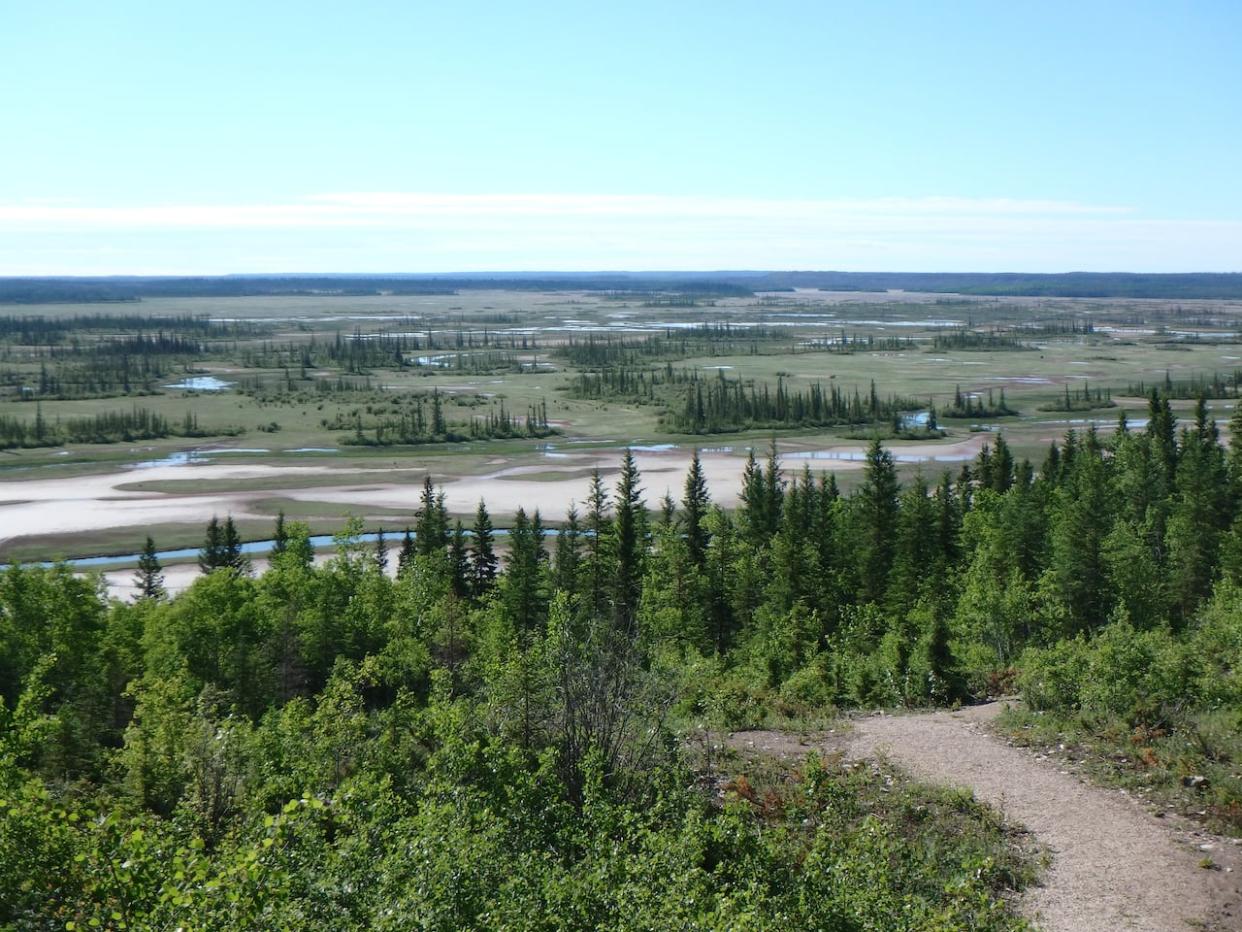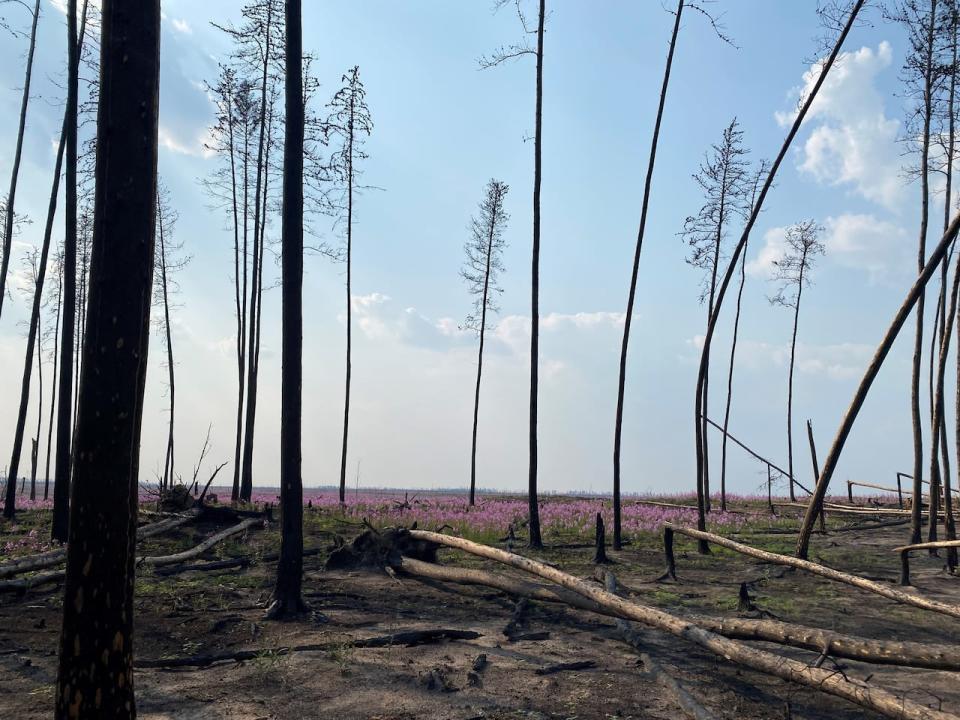Extreme drought is forcing Wood Buffalo National Park to more aggressively tackle wildfires

Though their overall firefighting strategy hasn't changed, wildfire fighters in Wood Buffalo National Park are having to attack fires more aggressively than usual because of how dry and hot it is.
"That may look like we're putting out more fires than we have in previous years," said Alyssa Etsell, the fire information officer for the park. "But it is still following the same kind of strategies and responses that we [always] have."
The park had an early start to fire season this year, Etsell noted, and had to bring in staff and resources earlier as a result. They also trained up non-fire staff as type-2 firefighters, to lend a hand as needed.
"We started smoke patrols earlier than in past years, using contracted fixed-wing aircraft until our helicopters arrived," Etsell said.
Earlier in the season, overwinter fires were the big concern. As the season progresses, lightning-caused fires have become the bigger concern, she said.
The management plan
Wood Buffalo's wildfire plan divides the park into three zones, with responses tailored to each area's characteristics.
Etsell said when a new fire starts, a fire specialist analyzes the vegetation, weather and fire history of the area, as well as how close the fire is to infrastructure.
Then, with feedback from the park's Indigenous partners, they decide what response is best.
That could include actively suppressing the fire, or relying on landscape-level containment, which uses planned ignition strategies to tie the fire into natural barriers like rivers.
The goal is to allow fires to fulfil their natural ecological roles while protecting critical areas, Etsell said.

In Wood Buffalo National Park last summer, after a wildfire. (Parks Canada)
But that kind of containment hasn't always been possible this year, given the deep-burning fires and drought conditions.
"Safety is our top priority," Etsell said. "We are managing fires based on what is safe for the public and our personnel, how we can protect communities and values, and what is beneficial from an ecological perspective."
Aggressive efforts to fight wildfires
More broadly across the N.W.T., the approach to fighting wildfires has been aggressive this year, after last year's significant fire season.
N.W.T. fire information officer Mike Westwick said that started with early detection measures — infrared scanners were used in late April and early May to identify hotspots, leading to early action on fires.
"I attribute [those] aggressive detection efforts early on in catching all those fires really small and being able to take the right action when we could there," he said.
The territory also deployed more people and equipment earlier than usual, since forecasts had predicted another challenging season.
But Westwick said drought conditions, ranging from moderate to severe across the territory, have made fires difficult to extinguish as they burn deeply into organic soil layers.
"When fire takes hold in those areas, they become much more difficult to put out," he said.
To combat that, N.W.T. fire management has emphasized the importance of thorough follow-up and ensuring that fire lines are completely cold after suppression activities.
"You really do need to dig in and make sure that those lines are cold before you can call them contained," he said.
Westwick also pointed to the natural role wildfires have in an ecosystem.
He said over-suppression has contributed to larger, more difficult-to-control fires.
"What happens when you don't allow fire to play its natural role on the landscape is those fuels build up, and that in turn — when you get the right weather, when you get ignitions in these areas — really make fires much more difficult to control," Westwick said.
"It is a fool's errand to try and eliminate fire from the landscape."


